Linux Fundamentals, 2nd Edition
Sander Van Vugt
Visit to download the full and correct content document: https://ebookmass.com/product/linux-fundamentals-2nd-edition-sander-van-vugt/
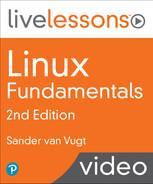
More products digital (pdf, epub, mobi) instant download maybe you interests ...
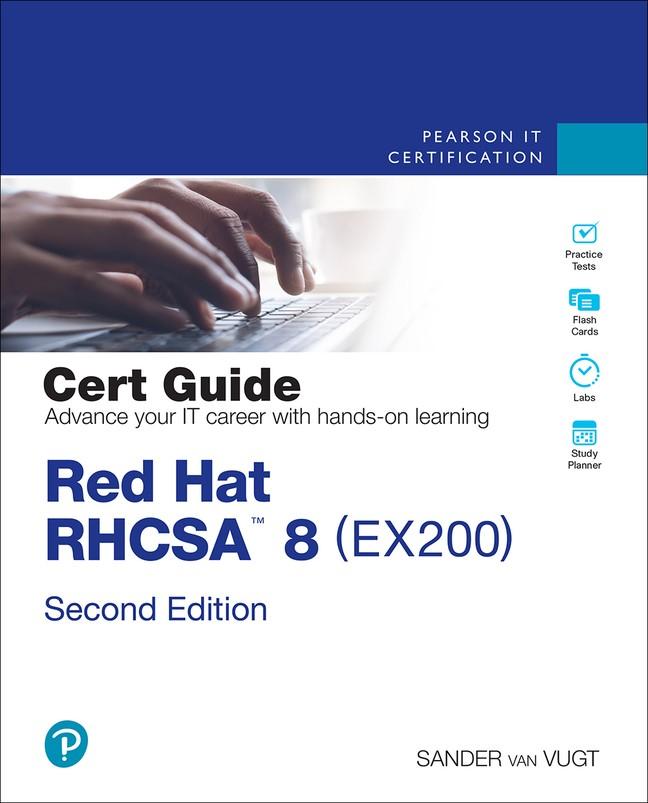
Red Hat RHCSA 8 Cert Guide: EX200 2nd Edition Sander
Van Vugt
https://ebookmass.com/product/red-hat-rhcsa-8-cert-guideex200-2nd-edition-sander-van-vugt/
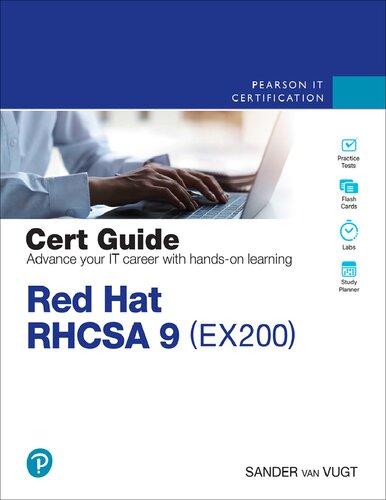
Cert Guide. Red Hat RHCSA 9 (EX200) 1st Edition Sander
Van Vugt
https://ebookmass.com/product/cert-guide-red-hatrhcsa-9-ex200-1st-edition-sander-van-vugt/
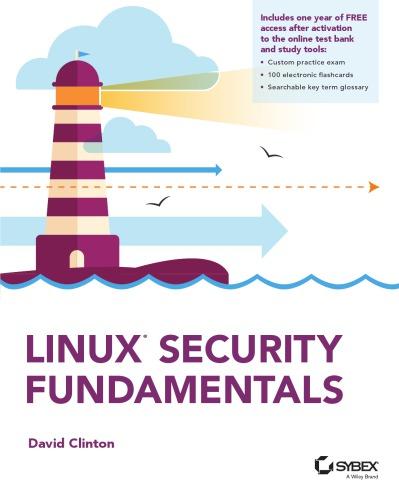
Linux Security Fundamentals 1st Edition Edition David
Clinton
https://ebookmass.com/product/linux-security-fundamentals-1stedition-edition-david-clinton/
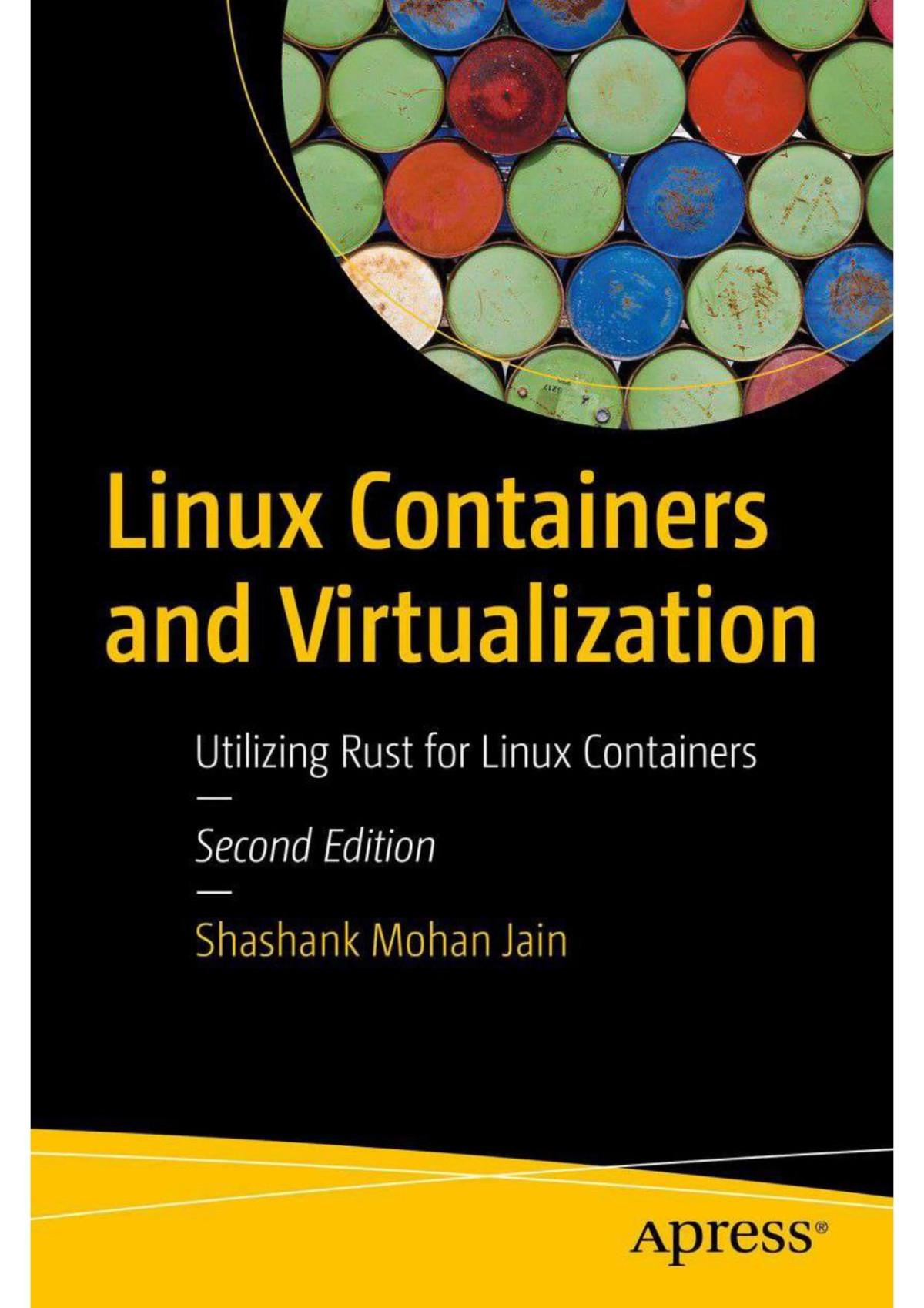
Linux Containers and Virtualization: Utilizing Rust for Linux Containers 2nd Edition Shashank Mohan Jain
https://ebookmass.com/product/linux-containers-andvirtualization-utilizing-rust-for-linux-containers-2nd-editionshashank-mohan-jain/

Wiley-Schnellkurs Europarecht Gerald Sander
https://ebookmass.com/product/wiley-schnellkurs-europarechtgerald-sander/

Fundamentals of Nursing 2nd Edition Lauren Mctier
https://ebookmass.com/product/fundamentals-of-nursing-2ndedition-lauren-mctier/
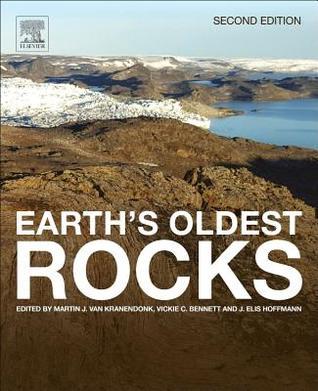
Earth's Oldest Rocks 2nd Edition Martin J. Van Kranendonk
https://ebookmass.com/product/earths-oldest-rocks-2nd-editionmartin-j-van-kranendonk/
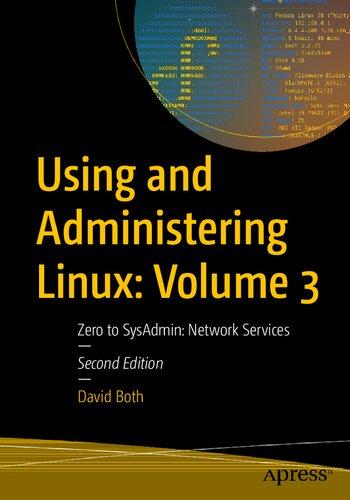
Using And Administering Linux: Volume 3 Zero To SysAdmin: Network Services (2nd ed.) 2nd Edition David
Both
https://ebookmass.com/product/using-and-administering-linuxvolume-3-zero-to-sysadmin-network-services-2nd-ed-2nd-editiondavid-both/
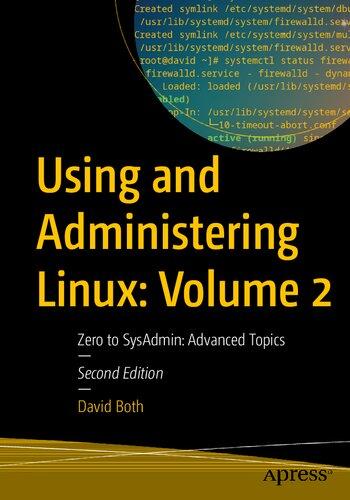
Using And Administering Linux: Volume 2 Zero To SysAdmin: Advanced Topics (2nd ed.) 2nd Edition David
Both
https://ebookmass.com/product/using-and-administering-linuxvolume-2-zero-to-sysadmin-advanced-topics-2nd-ed-2nd-editiondavid-both/

Transcript
00:00:06.331 00:00:10.500 - Welcome to the second edition of Linux fundamentals.
00:00:10.500 00:00:12.090 This video course was designed
00:00:12.090 00:00:14.010 to teach you core Linux basics,
00:00:14.010 00:00:17.220 so you can successfully launch your Linux career.
00:00:17.220 00:00:18.500 You will get an introduction
00:00:18.500 00:00:21.210 to the two major Linux distributions,
00:00:21.210 00:00:24.180 Red Hat family and Ubuntu Linux.
00:00:24.180 00:00:25.890 The foundations learned in this course
00:00:25.890 00:00:28.830 will help you get up and running with Linux.
00:00:28.830 00:00:31.200 If you are interested in getting certified,
00:00:31.200 00:00:33.330 this course is also a good way to secure
00:00:33.330 00:00:35.013 your foundational knowledge.
00:00:35.940 00:00:36.773 In this course,
00:00:36.773 00:00:38.970 I'll carefully guide you through the essential topics
00:00:38.970 00:00:40.760 of the Linux operating system.
00:00:40.760 00:00:42.900 To help you master the many commands
00:00:42.900 00:00:43.950 that you will learn,
00:00:43.950 00:00:46.260 each lesson ends with a command review,
00:00:46.260 00:00:47.190 as well as a lab,
00:00:47.190 00:00:49.190 that allows you to practice your skills.
00:00:50.130 00:00:53.400 In module one, I'll lay out the basics of Linux.
00:00:53.400 00:00:56.190 After performing a basic installation of Linux,
00:00:56.190 00:00:57.630 I'll make sure to get you going
00:00:57.630 00:00:59.790 on the Linux commands line.
00:00:59.790 00:01:02.520 I'll then introduce you to some essential tools,
00:01:02.520 00:01:04.230 essential file management tools,
00:01:04.230 00:01:06.360 and working with DEX files.
00:01:06.360 00:01:08.070 Once you've studied these lessons,
00:01:08.070 00:01:09.810 you'll have the solid foundation needed
00:01:09.810 00:01:11.541 to start working through other topics.
00:01:11.541 00:01:14.640 Such as advanced text file processing
00:01:14.640 00:01:17.040 and working with the bash shell.
00:01:17.040 00:01:19.050 In module two, you'll learn how to apply
00:01:19.050 00:01:20.600 user related security.
00:01:20.600 00:01:22.731 This module includes lessons about
00:01:22.731 00:01:24.600 user and group management
00:01:24.600 00:01:27.450 and also about permission management.
00:01:27.450 00:01:30.000 After studying the last lesson in this module,
00:01:30.000 00:01:31.650 you'll also have a basic understanding
00:01:31.650 00:01:33.420 of how to work with storage.
00:01:33.420 00:01:35.370 You'll learn how to create file systems
00:01:35.370 00:01:36.813 and also how to mount them.
00:01:38.130 00:01:40.800 In module three, we'll discuss Linux figures
00:01:40.800 00:01:42.960 that you will need to know about to configure Linux
00:01:42.960 00:01:45.180 to meet your daily IT needs.
00:01:45.180 00:01:47.100 I'll show you how to manage networking.
00:01:47.100 00:01:48.360 And next, we'll talk about
00:01:48.360 00:01:50.040 a system lead service manager,
00:01:50.040 00:01:51.960 and software management.
00:01:51.960 00:01:54.450 After that, you'll learn how to manage SSH,
00:01:54.450 00:01:55.530 as well as Time,
00:01:55.530 00:01:58.470 which are two essential services on Linux.
00:01:58.470 00:02:00.060 In the last three lessons,
00:02:00.060 00:02:01.980 you'll learn how to manage processes,
00:02:01.980 00:02:04.530 desk scheduling and log files.
00:02:04.530 00:02:05.363 And with that,
00:02:05.363 00:02:08.130 we've covered a sufficient amount of Linux basics,
00:02:08.130 00:02:09.930 which should provide a solid foundation
00:02:09.930 00:02:11.010 for your next steps
00:02:11.010 00:02:13.069 in the Linux operating system.
00:02:13.069 00:02:16.110 As we will spend quite some time together in this course,
00:02:16.110 00:02:18.240 let me tell you a bit about myself.
00:02:18.240 00:02:19.620 My name is Sander van Vugt,
00:02:19.620 00:02:20.970 and I'm a Linux instructor,
00:02:20.970 00:02:22.530 author and consultant.
00:02:22.530 00:02:23.550 Living in the Netherlands
00:02:23.550 00:02:26.220 and working with customers around the world.
00:02:26.220 00:02:28.530 I have published more than 25 video courses
00:02:28.530 00:02:30.390 on Linux related topics.
00:02:30.390 00:02:31.500 Such as my best selling
00:02:31.500 00:02:34.200 Red Hat Certified Systems Administrator,
00:02:34.200 00:02:36.840 Linux Under the Hood and Linux+.
00:02:36.840 00:02:39.360 I also have courses on some more advanced topics
00:02:39.360 00:02:41.910 such as Kubernetes, Linux troubleshooting
00:02:41.910 00:02:44.550 and Linux performance optimization.
00:02:44.550 00:02:47.070 Before you can tackle those more advanced courses,
00:02:47.070 00:02:48.750 you need to know the fundamentals.
00:02:48.750 00:02:50.793 So let's wait no longer and get started.
Transcript
00:00:07.440 00:00:09.090 - Welcome to Module 1.
00:00:09.090 00:00:12.120 In this module, you'll learn about the essentials of Linux.
00:00:12.120 00:00:14.040 We'll start by performing an installation
00:00:14.040 00:00:17.220 of two leading Linux distributions of the moment,
00:00:17.220 00:00:20.430 Ubuntu and CentOS, in Lesson 1.
00:00:20.430 00:00:23.430 After that, I'll teach you how to use essential tools,
00:00:23.430 00:00:26.760 file management tools, and how to work with text files.
00:00:26.760 00:00:28.050 With that, you should start
00:00:28.050 00:00:30.300 getting a pretty good understanding of Linux.
00:00:30.300 00:00:33.060 And we'll be ready to talk about working with the Bash shell
00:00:33.060 00:00:34.773 in the last lesson in this module.
Transcript
00:00:07.320 00:00:08.970 - Welcome to Lesson 1.
00:00:08.970 00:00:11.700 To get started with Linux, you'll need to install it.
00:00:11.700 00:00:13.560 And that's exactly what we are going to do
00:00:13.560 00:00:14.700 in this lesson.
00:00:14.700 00:00:16.770 You'll learn how to install Ubuntu Linux
00:00:16.770 00:00:19.200 as well as CentOS, which allows you to work
00:00:19.200 00:00:21.540 with the Linux distribution of your choice.
00:00:21.540 00:00:22.680 And that is all you need
00:00:22.680 00:00:25.440 before we can continue with Lesson 2.
00:00:25.440 00:00:27.630 At the end of this lesson, we'll do a lab
00:00:27.630 00:00:30.430 which allows you to practice your newly acquired skills.
Transcript
00:00:06.810 00:00:08.340 - So welcome to Linux.
00:00:08.340 00:00:10.020 Before we are going to start,
00:00:10.020 00:00:13.470 let's try to understand what Linux really is.
00:00:13.470 00:00:15.540 Linux originates from UNIX.
00:00:15.540 00:00:18.060 And UNIX was the leading operating systems
00:00:18.060 00:00:20.340 invented in the early 1970s,
00:00:20.340 00:00:21.930 and it was leading all the way
00:00:21.930 00:00:24.333 throughout the end of the 1990s.
00:00:25.350 00:00:27.150 Linux fits in a movement started
00:00:27.150 00:00:29.310 by the Free Software Foundation.
00:00:29.310 00:00:31.980 Free Software Foundation was created
00:00:31.980 00:00:35.430 because Unix became really commercial.
00:00:35.430 00:00:38.760 In the beginning, in the early years of Unix,
00:00:38.760 00:00:40.440 there wasn't really arranged anything
00:00:40.440 00:00:42.240 for licenses and so on.
00:00:42.240 00:00:46.200 And already in the 1970s and even more in the 1980s,
00:00:46.200 00:00:49.530 Unix became very commercial and expensive.
00:00:49.530 00:00:52.050 And as a counter movement to that,
00:00:52.050 00:00:54.330 Free Software Foundation started.
00:00:54.330 00:00:56.610 The Free Software Foundation had a mission
00:00:56.610 00:00:58.620 to provide software for free
00:00:58.620 00:01:01.590 because everybody should be able to use software
00:01:01.590 00:01:03.063 to develop their skills.
00:01:04.380 00:01:08.130 A part of the Free Software Foundation is GNU,
00:01:08.130 00:01:10.560 which stands for GNU not Unix.
00:01:10.560 00:01:15.270 And the mission of GNU is to provide free tools for Unix.
00:01:15.270 00:01:17.190 And already in the 1980s
00:01:17.190 00:01:19.650 many free tools were already launched.
00:01:19.650 00:01:23.400 So you can imagine that on a commercial Unix distribution
00:01:23.400 00:01:25.473 such as Sun Solaris, for instance,
00:01:26.520 00:01:30.360 there was this utility like LS.
00:01:30.360 00:01:34.620 And GNU has reworked all of these utilities
00:01:34.620 00:01:37.170 with an open source license.
00:01:37.170 00:01:39.360 An open source is what it is all about.
00:01:39.360 00:01:40.410 Source code is free.
00:01:40.410 00:01:42.783 sort of software is free for everybody.
00:01:43.620 00:01:46.630 Now in the year, 1992,
00:01:46.630 00:01:50.580 Linus Torvalds added the Linux kernel to GNU.
00:01:50.580 00:01:54.210 And that made the GNU system complete.
00:01:54.210 00:01:55.920 So by combining the Linux kernel
00:01:55.920 00:01:58.500 with other GNU tools that already existed
00:01:58.500 00:02:01.530 is as possible to install Linux
00:02:01.530 00:02:03.663 as an actual operating system.
00:02:04.650 00:02:08.880 In the early days, in order to do the installation,
00:02:08.880 00:02:11.100 you needed to compile everything yourself
00:02:11.100 00:02:12.810 and gather everything yourself.
00:02:12.810 00:02:14.370 That was not really doable.
00:02:14.370 00:02:17.850 And for that reason already in the very early years
00:02:17.850 00:02:20.040 the distributions were provided.
00:02:20.040 00:02:22.440 And amongst the very first of the distributions
00:02:22.440 00:02:25.410 were Yggdrasil and Slackware.
00:02:25.410 00:02:29.640 And later other distributions were founded as well.
00:02:29.640 00:02:30.510 In the next video,
00:02:30.510 00:02:33.180 I will tell you about these other distributions
00:02:33.180 00:02:35.340 and what the Linux distribution landscape
00:02:35.340 00:02:37.143 looks like nowadays.
Transcript
00:00:06.570 00:00:08.610 - In this video, I'm going to give you an overview
00:00:08.610 00:00:10.770 of Linux distributions.
00:00:10.770 00:00:13.920 So it all started with the GNU utilities
00:00:13.920 00:00:15.930 plus the Linux kernel.
00:00:15.930 00:00:20.820 And you don't want to do that for yourself.
00:00:20.820 00:00:23.340 Well, if you wanted to do it for yourself,
00:00:23.340 00:00:27.663 that we call Linux From Scratch.
00:00:30.930 00:00:33.060 But Linux From Scratch is really not something
00:00:33.060 00:00:34.200 that I would recommend.
00:00:34.200 00:00:35.970 It's complicated.
00:00:35.970 00:00:38.430 If we talk about major distributions, 00:00:38.430 00:00:40.860 there are two big developments.
00:00:40.860 00:00:43.233 Development number one is Red Hat.
00:00:44.700 00:00:47.400 So Red Hat actually started quite early.
00:00:47.400 00:00:48.510 And Red Hat has become
00:00:48.510 00:00:53.510 the number one most successful Linux distribution around.
00:00:54.060 00:00:58.290 Based on Red Hat, we have different other distributions.
00:00:58.290 00:01:01.030 There is for instance CentOS
00:01:03.390 00:01:04.653 and Fedora.
00:01:06.420 00:01:08.670 Fedora is the open source platform.
00:01:08.670 00:01:10.770 Fedora feeds into CentOS.
00:01:10.770 00:01:13.410 And CentOS is the continuous development platform
00:01:13.410 00:01:16.530 for Red Hat Enterprise Linux.
00:01:16.530 00:01:18.450 Now from Red Hat Enterprise Linux,
00:01:18.450 00:01:22.410 there are some free Linux distributions available as well.
00:01:22.410 00:01:26.463 And these free Linux distributions are Rocky Linux,
00:01:27.330 00:01:28.923 and they are AlmaLinux.
00:01:30.780 00:01:32.580 So if you look at the development cycle,
00:01:32.580 00:01:35.220 it all starts with Fedora, then comes CentOs,
00:01:35.220 00:01:36.540 then there is Red Hat.
00:01:36.540 00:01:38.700 Red Hat is the successful product,
00:01:38.700 00:01:41.190 but for companies, people that don't want to pay
00:01:41.190 00:01:43.170 for Red Hat functionality, there is Rocky,
00:01:43.170 00:01:44.550 there is AlmaLinux.
00:01:44.550 00:01:46.110 It's all the same.
00:01:46.110 00:01:47.760 And let's not forget
00:01:47.760 00:01:50.130 that there's another major Linux distribution
00:01:50.130 00:01:52.020 that is derived from Red Hat,
00:01:52.020 00:01:53.313 and that is Oracle.
00:01:54.420 00:01:58.980 Oracle Linux, in fact, is a Red Hat Linux distribution.
00:01:58.980 00:02:03.210 The other important development is Debian.
00:02:03.210 00:02:06.450 Debian is also one of the early distributions,
00:02:06.450 00:02:09.180 and Debian has become the foundation
00:02:09.180 00:02:13.503 for some very important distribution, and that is Ubuntu.
00:02:15.617 00:02:17.880 Ubuntu is one of the major distributions
00:02:17.880 00:02:21.240 that we are going to use here in this course.
00:02:21.240 00:02:23.070 And based on Ubuntu,
00:02:23.070 00:02:26.004 there are other Linux distributions as well.
00:02:26.004 00:02:27.990 They are derived from Ubuntu,
00:02:27.990 00:02:32.990 and we should mention Linux Mint, for instance.
00:02:33.000 00:02:36.210 And we should mention Kali Linux.
00:02:36.210 00:02:40.200 Kali Linux is really security oriented,
00:02:40.200 00:02:42.120 and Linux Mint was created
00:02:42.120 00:02:44.973 because it has a nicer graphical interface.
00:02:45.960 00:02:48.450 These are the main distributions family.
00:02:48.450 00:02:50.463 There are other distributions around,
00:02:51.330 00:02:53.520 and you may come across,
00:02:53.520 00:02:55.653 but this is what really matters nowadays.
Transcript
00:00:06.840 00:00:08.640 - All right, so as we have learned,
00:00:08.640 00:00:12.360 there are different versions in the Red Hat Linux family.
00:00:12.360 00:00:15.390 And I wanna tell you how to get all three of them
00:00:15.390 00:00:19.470 because it should be your choice what you want to work with.
00:00:19.470 00:00:21.120 If you wanna work with the real thing,
00:00:21.120 00:00:22.990 then you go to developers
00:00:27.067 00:00:29.043 .redhat.com.
00:00:30.240 00:00:33.120 And on developers.redhat.com,
00:00:33.120 00:00:35.520 you can get access to free software.
00:00:35.520 00:00:37.920 The only requirement is that you need an account.
00:00:37.920 00:00:40.230 So you start by logging in.
00:00:40.230 00:00:43.650 And if you are not yet registered
00:00:43.650 00:00:46.050 with developers.redhat.com,
00:00:46.050 00:00:48.270 you use one of these systems to register
00:00:48.270 00:00:52.140 or you create your own account, whatever you want.
00:00:52.140 00:00:53.850 So I already have my account,
00:00:53.850 00:00:56.370 and I'm going to use it to log in.
00:00:56.370 00:00:58.620 And after logging in,
00:00:58.620 00:01:03.543 I am able to actually download the software.
00:01:07.380 00:01:11.910 So in order to do so, you go to the Products link.
00:01:11.910 00:01:13.050 And in the Product links,
00:01:13.050 00:01:15.780 you'll find Red Hat Enterprise Linux.
00:01:15.780 00:01:18.150 In Red Hat Enterprise Linux, as you can see,
00:01:18.150 00:01:20.373 there's Download RHEL at no-cost,
00:01:21.217 00:01:23.223 and you are just going to use that.
00:01:26.250 00:01:28.050 So if you click it, as you can see,
00:01:28.050 00:01:30.690 the download starts immediately.
00:01:30.690 00:01:33.180 Now it'll always download the latest version.
00:01:33.180 00:01:34.710 Now the thing is that
00:01:34.710 00:01:36.510 at the moment that we are recording this,
00:01:36.510 00:01:39.930 the latest version is 8.5.
00:01:39.930 00:01:41.970 By the time you are watching this video,
00:01:41.970 00:01:44.670 RHEL 9 is most likely available.
00:01:44.670 00:01:46.860 And that is why I'm not going to show you
00:01:46.860 00:01:51.860 how to work with Red Hat, but I am going to show you CentOS.
00:01:51.930 00:01:53.643 Let's go to centos.org.
00:01:55.170 00:02:00.170 So in centos.org, we are going to use CentOS Stream.
00:02:00.570 00:02:05.040 CentOS Stream is what Red Hat is using as a foundation
00:02:05.040 00:02:08.010 for Red Hat Enterprise Linux, as discussed before.
00:02:08.010 00:02:10.440 And the nice thing about CentOS Stream is
00:02:10.440 00:02:12.990 that you get the latest and greatest.
00:02:12.990 00:02:14.310 And the cool thing is
00:02:14.310 00:02:19.310 that CentOS Stream is already available in version nine,
00:02:19.590 00:02:22.650 and that is exactly what I need.
00:02:22.650 00:02:24.720 So in order to download CentOS Stream,
00:02:24.720 00:02:28.077 you click the link, and then you select CentOS Stream.
00:02:28.077 00:02:30.810 And you make sure that you work on the latest version.
00:02:30.810 00:02:33.210 As you can see, the latest version is version nine,
00:02:33.210 00:02:35.730 and it's already selected here.
00:02:35.730 00:02:40.050 Then you select the platform, which is x86_64,
00:02:40.050 00:02:43.413 and this is going to download CentOS Stream for you.
00:02:44.580 00:02:46.860 CentOS Stream is what I'm going to use here
00:02:46.860 00:02:48.720 because CentOS Stream at the moment
00:02:48.720 00:02:51.600 that I am recording this is the only software
00:02:51.600 00:02:54.600 that reflects Red Hat Enterprise Linux 9.
00:02:54.600 00:02:56.280 But by the time you are watching this,
00:02:56.280 00:02:58.860 even if you are using Red Hat Enterprise Linux
00:02:58.860 00:03:02.850 or Rocky Linux, you'll get the exact same experience
00:03:02.850 00:03:04.980 as CentOS Stream.
00:03:04.980 00:03:06.480 Now as discussed before,
00:03:06.480 00:03:09.750 CentOS Stream is an awesome platform to get access
00:03:09.750 00:03:12.750 to the latest and greatest software versions,
00:03:12.750 00:03:15.570 but it's not really right for production.
00:03:15.570 00:03:18.660 You can consider it kind of a continuous beta
00:03:18.660 00:03:20.730 for Red Hat Enterprise Linux.
00:03:20.730 00:03:23.580 So if the final version nine is available,
00:03:23.580 00:03:26.070 you better go for Red Hat Enterprise Linux
00:03:26.070 00:03:28.050 or for Rocky Linux.
00:03:28.050 00:03:29.763 Let's talk about Rocky Linux.
00:03:31.170 00:03:35.463 So if you look for Rocky Linux,
00:03:36.490 00:03:38.580 rockylinux.org is where you go.
00:03:38.580 00:03:41.580 And Rocky Linux, as discussed before,
00:03:41.580 00:03:44.490 is the completely open-source fork
00:03:44.490 00:03:46.890 of Red Hat Enterprise Linux.
00:03:46.890 00:03:48.300 Or better, I should say,
00:03:48.300 00:03:52.350 Rocky Linux is the fork of Red Hat Enterprise Linux
00:03:52.350 00:03:55.920 where you don't have to share your personal information,
00:03:55.920 00:03:58.050 you don't need any license agreement.
00:03:58.050 00:04:01.170 You just click on the Download button.
00:04:01.170 00:04:03.960 So if you click Download on the latest version,
00:04:03.960 00:04:06.060 and again, the latest version
00:04:06.060 00:04:09.000 while we are recording here is version eight.
00:04:09.000 00:04:10.440 By the time you are watching this,
00:04:10.440 00:04:13.260 hopefully, version nine will be available.
00:04:13.260 00:04:16.860 You download the latest version, there's x86_64.
00:04:16.860 00:04:18.120 And in Rocky Linux,
00:04:18.120 00:04:20.430 you can actually choose what you wanna do.
00:04:20.430 00:04:23.610 You can select between Minimal and DVD and Boot.
00:04:23.610 00:04:26.460 I would say go for DVD
00:04:26.460 00:04:28.890 if you have decent internet bandwidth.
00:04:28.890 00:04:30.480 It's about 10 gigabytes.
00:04:30.480 00:04:35.480 Go for minimal if your internet bandwidth is not that great.
00:04:35.880 00:04:39.360 Minimal is the minimal environment,
00:04:39.360 00:04:41.610 but if you are going for minimal,
00:04:41.610 00:04:44.190 you will need to download the packages
00:04:44.190 00:04:45.660 while you are installing.
00:04:45.660 00:04:48.090 But the advantage is that you will only download packages
00:04:48.090 00:04:49.890 that you are actually going to need.
00:04:50.940 00:04:53.100 So depending on what you wanna do,
00:04:53.100 00:04:55.350 you use either of these three options.
00:04:55.350 00:04:56.340 In the next video,
00:04:56.340 00:05:00.483 I am going to show you how to install CentOS Stream.
Transcript
00:00:07.110 00:00:08.040 - So in this video,
00:00:08.040 00:00:10.800 I'm going to show you how to install CentOS Stream.
00:00:10.800 00:00:13.980 CentOS Stream is one of the Linux versions
00:00:13.980 00:00:16.050 in the Red Hat family.
00:00:16.050 00:00:17.940 Before installing it in a virtual machine,
00:00:17.940 00:00:20.070 let's have a look at the requirements.
00:00:20.070 00:00:22.020 So you need to download a latest version
00:00:22.020 00:00:24.453 of CentOS Stream from centos.org.
00:00:25.290 00:00:27.510 Next, you install it in a virtual machine,
00:00:27.510 00:00:31.110 which is what I would recommend, or directly on hardware.
00:00:31.110 00:00:33.240 But for learning purposes, I wouldn't do that.
00:00:33.240 00:00:35.550 Start with a virtual machine.
00:00:35.550 00:00:39.120 This virtual machine needs a minimum of one gigabyte of RAM
00:00:39.120 00:00:41.253 and 10 gigabytes of disc space.
00:00:42.150 00:00:45.960 We will worry about additional discs later in this class.
00:00:45.960 00:00:47.610 And while installing,
00:00:47.610 00:00:50.850 please use the server with GUI installation pattern.
00:00:50.850 00:00:51.693 Let me show you.
00:00:54.120 00:00:56.280 So this is the first screen that you will see
00:00:56.280 00:00:59.880 after booting from the CentOS Stream installation media.
00:00:59.880 00:01:00.713 And obviously,
00:01:00.713 00:01:04.020 we are going to select Install CentOS Stream 9.
00:01:04.020 00:01:06.720 Here, we can see that the installer is loading.
00:01:06.720 00:01:09.470 That'll take a minute or so, and then you can continue.
00:01:13.200 00:01:16.050 All right, so we need to select an installation language.
00:01:16.890 00:01:18.960 That will be English, United States.
00:01:18.960 00:01:22.200 Even if you are intending to use a Linux
00:01:22.200 00:01:25.320 with a different language, for learning purposes,
00:01:25.320 00:01:28.350 I would advise to start with English,
00:01:28.350 00:01:30.720 whatever kind of English because it makes it easier
00:01:30.720 00:01:34.473 to get support on your installation, if ever that is needed.
00:01:36.150 00:01:40.140 Now the main installation screen is showing all of this.
00:01:40.140 00:01:43.263 And in this main screen, we need to do a couple of things.
00:01:44.310 00:01:46.500 First, let's start on the left.
00:01:46.500 00:01:47.970 The things that we see right here
00:01:47.970 00:01:50.430 in localization are quite okay,
00:01:50.430 00:01:52.920 but I would like to go into the User Settings,
00:01:52.920 00:01:56.100 where we can see that the root account is disabled.
00:01:56.100 00:01:58.050 I want to change that,
00:01:58.050 00:02:02.520 and that is because in a Red Hat and similar distributions,
00:02:02.520 00:02:05.880 logging in as a root user has been common for a long time.
00:02:05.880 00:02:08.640 So I wanna make sure that we have a root user
00:02:08.640 00:02:10.620 with a password as well.
00:02:10.620 00:02:13.200 So here we go, I'm entering the password.
00:02:13.200 00:02:18.200 And also, I am going to select Allow root SSH login
00:02:18.690 00:02:19.980 with password.
00:02:19.980 00:02:21.540 I just want to make it easy
00:02:21.540 00:02:24.213 and make sure that the root user has full access.
00:02:25.920 00:02:28.980 Next, we need to have a look at the software selection.
00:02:28.980 00:02:30.420 So in the software selection,
00:02:30.420 00:02:33.960 you determine what exactly you want to install with Linux.
00:02:33.960 00:02:36.090 We are going to use server with GUI.
00:02:36.090 00:02:38.640 The GUI is a graphical user interface,
00:02:38.640 00:02:42.210 and using the graphical user interface is easier
00:02:42.210 00:02:44.340 to get familiar with Linux.
00:02:44.340 00:02:46.740 You should notice that most Linux servers don't have
00:02:46.740 00:02:48.360 a graphical user interface,
00:02:48.360 00:02:50.460 and they have been installed with either Server
00:02:50.460 00:02:52.260 or Minimal Install.
00:02:52.260 00:02:55.470 But as I said, server with GUI is what I'm going
00:02:55.470 00:02:57.150 to use here.
00:02:57.150 00:02:59.910 Next, you can see an exclamation mark right here
00:02:59.910 00:03:02.250 at the Installation Destination,
00:03:02.250 00:03:04.170 and that is because the installer is
00:03:04.170 00:03:07.020 about to overwrite the entire hard drive.
00:03:07.020 00:03:10.860 And we need to tell the installer that that's okay.
00:03:10.860 00:03:12.240 So I'm clicking Done,
00:03:12.240 00:03:14.880 and that's all that we need to do here.
00:03:14.880 00:03:17.343 And then the final step is about networking.
00:03:18.330 00:03:19.650 So you can see
00:03:19.650 00:03:23.370 that it has a wired ethernet connection currently connected,
00:03:23.370 00:03:25.200 and it even has an IP address
00:03:25.200 00:03:27.780 that has automatically been assigned.
00:03:27.780 00:03:30.003 And let's give this machine a name.
00:03:32.520 00:03:35.073 And let me click on Apply and Done.
00:03:35.940 00:03:37.110 Then there is one more thing,
00:03:37.110 00:03:39.120 and in order to get access to that one more thing,
00:03:39.120 00:03:42.210 you need to scroll down, and that's User Creation,
00:03:42.210 00:03:46.140 because even if you allow the root user to log in directly,
00:03:46.140 00:03:47.730 you should have an ordinary user
00:03:47.730 00:03:50.190 for your regular tasks as well.
00:03:50.190 00:03:53.970 So I am going to create this user, and that's important.
00:03:53.970 00:03:57.393 I'm going to select the option Make this user administrator.
00:03:58.650 00:04:01.350 I will tell you later what exactly that is doing,
00:04:01.350 00:04:02.880 but this will allow the user
00:04:02.880 00:04:06.660 to run administration tasks as well.
00:04:06.660 00:04:10.920 Now we need a password and you need to type it twice.
00:04:10.920 00:04:13.050 You can see in the bottom part of the screen
00:04:13.050 00:04:15.450 that the password fills the dictionary check.
00:04:15.450 00:04:17.430 So the install is complaining,
00:04:17.430 00:04:20.700 and that's because I'm using an insecure password.
00:04:20.700 00:04:23.190 I don't care about using secure passwords here.
00:04:23.190 00:04:26.010 So I'm clicking Done and Done, and that will be good.
00:04:26.010 00:04:28.050 And then Begin Installation
00:04:28.050 00:04:30.033 to actually start the installation.
00:04:31.110 00:04:34.320 Now this procedure in total will take a couple of minutes.
00:04:34.320 00:04:37.260 It can easily take 10 minutes before it's done.
00:04:37.260 00:04:38.970 You need to wait for it
00:04:38.970 00:04:41.220 because before the installation is done,
00:04:41.220 00:04:43.420 there's nothing else that you can do anyway.
00:04:45.630 00:04:48.360 All right, so as you can see at this point,
00:04:48.360 00:04:51.273 the system is ready so we can click Reboot.
00:04:55.470 00:04:56.580 And there we go, here,
00:04:56.580 00:04:57.630 we have the bootloader
00:04:57.630 00:05:00.420 of our brand-new CentOS Stream system.
